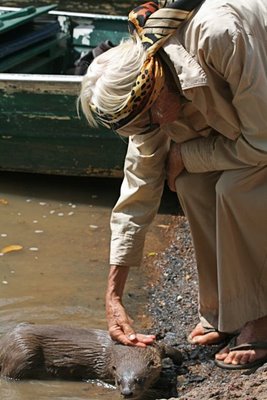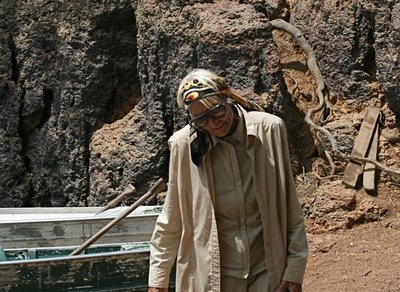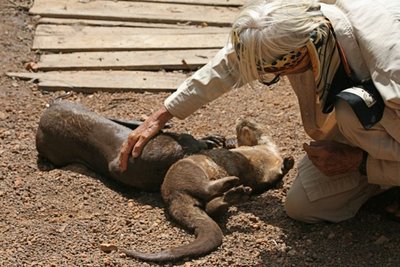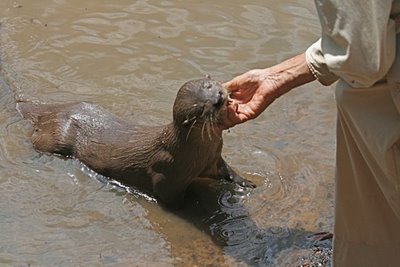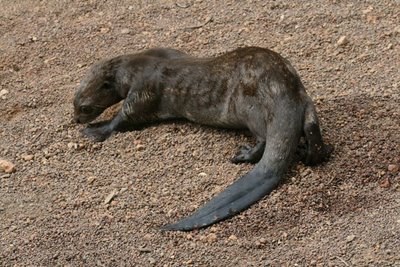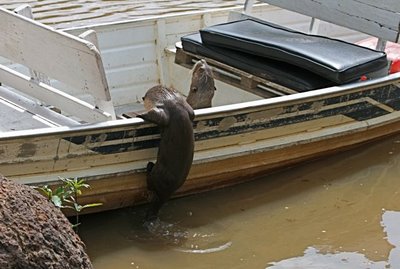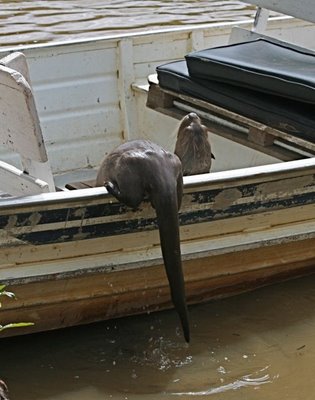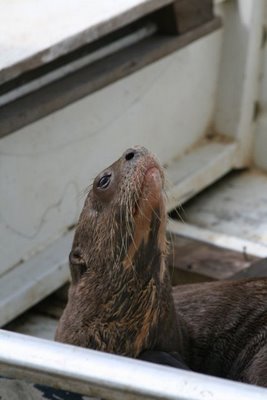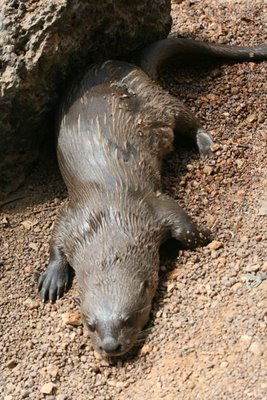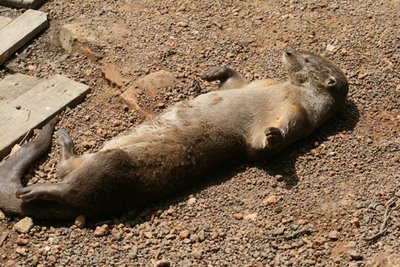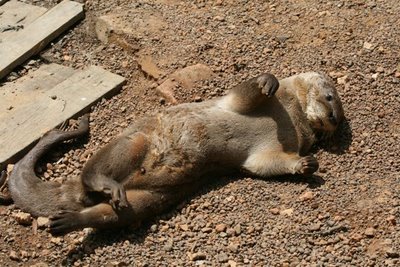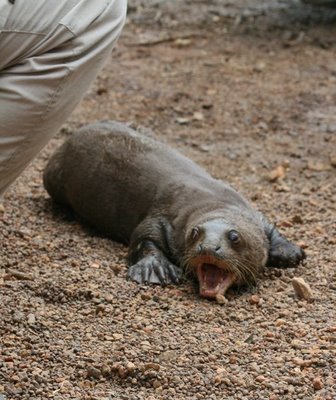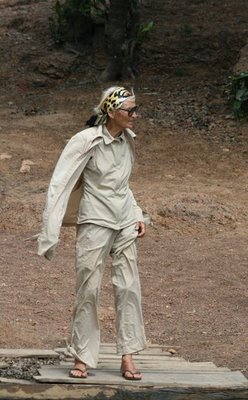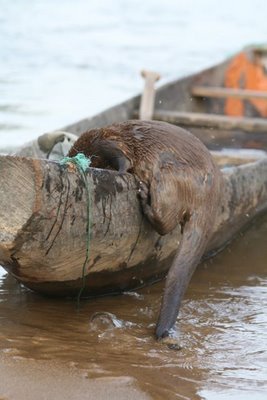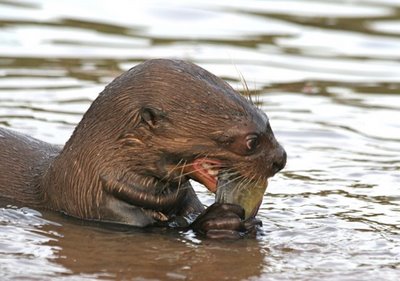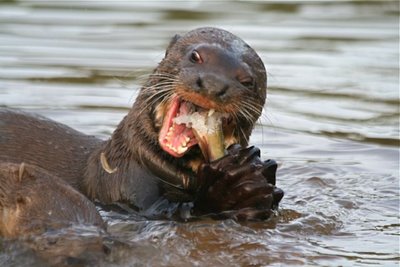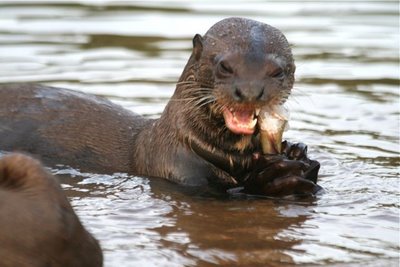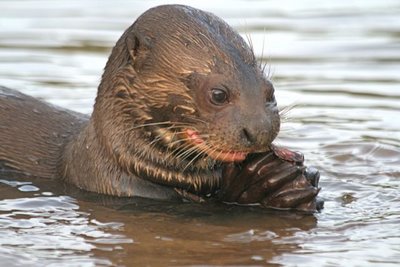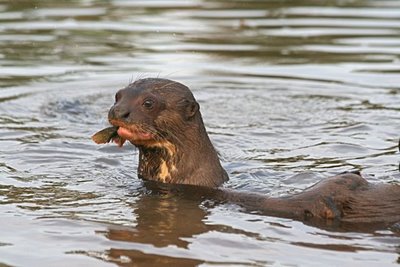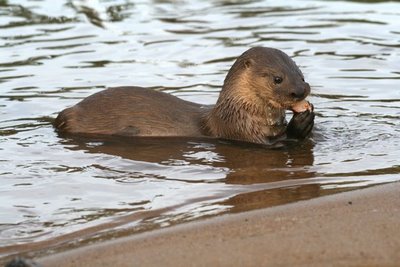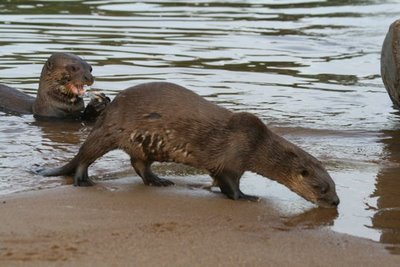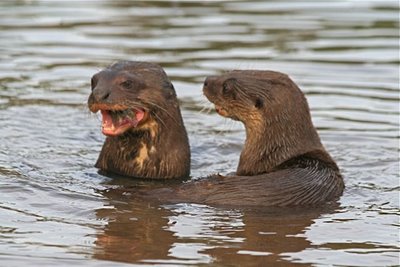Giant Otters in the Wild
I think you all know me well enough to know that, as delighted as I was to be able to touch and talk with and photograph a hand-raised giant Amazon otter, I yearned to see them in the wild in Guyana. Maybe it's my birder conditioning, but it just doesn't feel real until you see a creature in its habitat, unrestrained and wary. And so I strained my eyes as we boated the Rupununi river, looking for that seal-like bump in the water that might prove to be the rarest animal in the Amazon.
We saw their dens--several of them--called "holts" in otterspeak. From one to five cubs may be born in each litter, and they may stay with their parents for two or more years, helping take care of younger siblings. They can't swim until they're about three weeks old, and at three to four months of age they begin to travel with their family. They nurse for nine months--compare that to your dog, who was probably weaned at eight weeks!
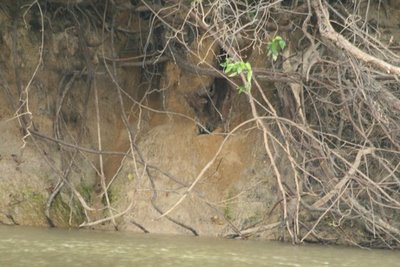 A giant Amazon otter den, or holt. Rupununi River, Guyana, South America.
A giant Amazon otter den, or holt. Rupununi River, Guyana, South America.Survival of the giant otter in these three countries is vital to the survival of the species on this planet. Can ecotourism help? If it can be managed so as not to disrupt this diurnal mammal's life, perhaps. If you'd like to see a wild giant otter, you should go to Guyana, French Guiana, or Suriname and do that. You should do it soon.
A fantastic boatman--the best I've ever seen--spotted them first. I wish I had caught his name, had put on my portrait lens to grab a picture of him. I was too close to capture him with the telephoto, and too excited to switch lenses. I was enthralled by the river, the herons, the kingfishers, the possibility, however remote, of a wild giant otter. If I so much as felt for my camera, he'd slow the engine and sidle toward whatever he saw me studying. We were working in concert. He pointed, and said in a low voice, "There--on the log."
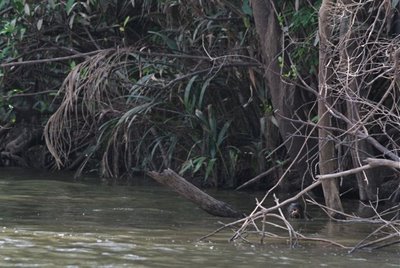 I couldn't see it in the brilliant light, but I focused on the log and prayed. And there it was, talking. My first wild giant otter.
I couldn't see it in the brilliant light, but I focused on the log and prayed. And there it was, talking. My first wild giant otter.Amazingly, it swam closer to the boat.
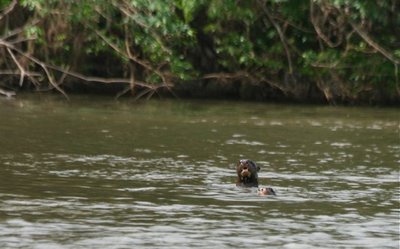
And there was another animal with it. And two more just downriver.
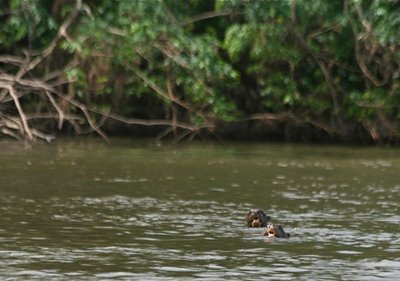
And they were squalling and calling and wailing and squeaking as giant otters do, and I was overcome.
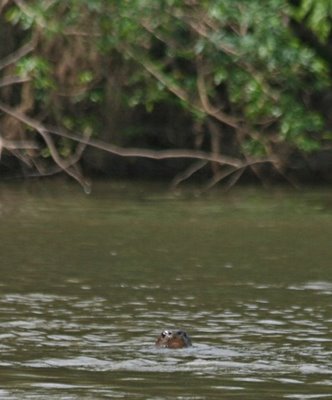
Be careful, curious little one. Don't trust that every boat you see has only a teary Science Chimp in it.
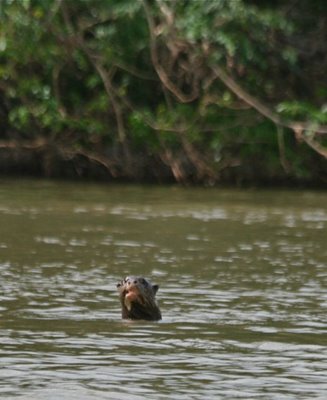
Oh, thank you, suspicious goblin. You have made my year. Go in peace, and make more giant otters.
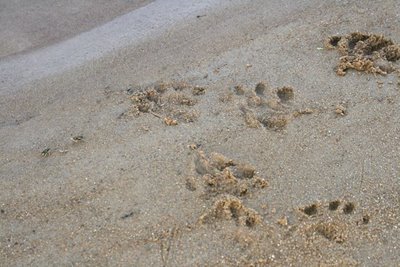
Labels: ecotourism in Guyana, French Guiana, Giant amazon otter, Guyana, Suriname, threats to giant otters

